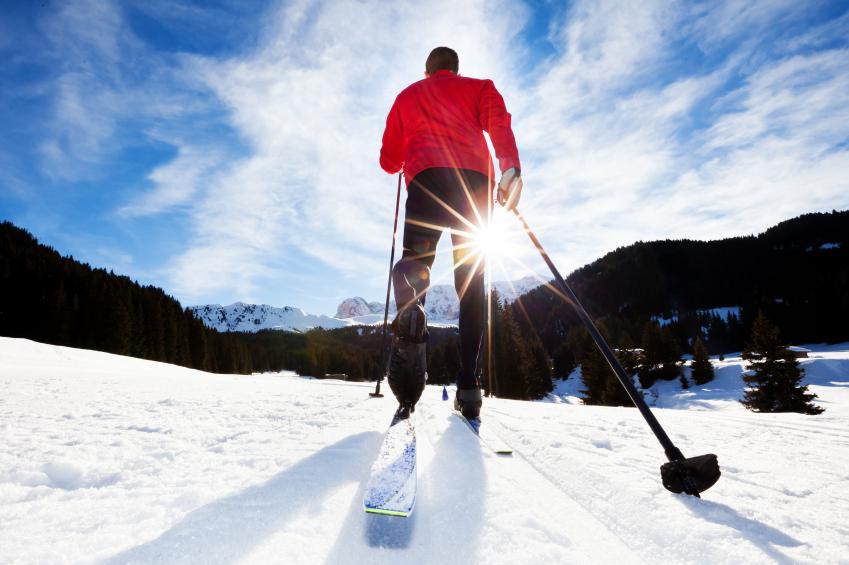
Many of the serious accidents that occur on the piste are as a result of complacency. Experienced skiers can become careless because they often overestimate their own skills. Anyone who takes to the slopes is susceptible to accidents and injury, so taking some precautions is vital.
Altitude
Most healthy travellers will adjust to altitudes up to 10,000 feet in a few days. Altitude sickness can bring on headaches, fatigue, nausea, shortness of breath and insomnia. The higher the altitude, the longer it takes to acclimatise. Exertion makes things worse, the air is noticeably thinner and you will get out of breath quicker at least until your body has had time to produce more red blood cells to compensate. It is good advice to take it easy for the first day or two. Being at high altitude can also have adverse effects on alcohol capacity, diet, how cold you feel, blood pressure, respiration and tiredness. While taking it easy over the first couple of days it’s advisable to avoid too much alcohol, as your tolerance will be much lower than usual at altitude. Ensure you drink plenty of water and eat plenty of high energy food, be careful about keeping warm and dry, and be careful not to get sunburnt.
Drink Plenty of Water
The air at altitude is much thinner and can therefore cause dehydration. Drinking much more water than usual is very important, at least 2 litres per day is recommended. Despite common confusion, tap water in the Alps is generally fine to drink, although water in the Alps does contain a high mineral content which can disagree with some sensitive stomachs.
Don’t Forget The Sun-cream
Sun protection is really important in the mountains during winter, the risk of sun damage is increased as there is less atmosphere to block the sun and snow can reflect up to 80% of the sun’s rays. High factor sunscreen is essential (even on cloudy days).
Keep Warm and Dry
The weather in the mountains can be a problem, it can change rapidly. In the mountains, the air is colder and the sun is stronger, as is the wind. Dressing in layers is always best so you can remove or add clothes accordingly. It is vital that you ski in recommended clothing designed for skiing and snowboarding. Sunglasses and hats are also extremely important to help avoid sun damage to the eyes and wind damage to the ears, which can be extremely painful.
Staying Safe On Piste
Staying safe on piste involves you always skiing with caution and awareness of those around you. Whether you are an expert or a beginner if you don’t plan you every turn by considering your fellow skiers there is the danger of a collision. Look out for icy and less snow covered patched too, these will cause your skis to travel differently which could unbalance you if you aren’t paying attention to the surface. Sticking to the edge of the slopes is often a good idea as snow tends to gather here, particularly towards the afternoon, which will make it easier for you to manipulate your skis in the way you wish.
It’s also a good idea to carry a rucksack, packed with essentials such as water supplies, extra clothing and of course plenty of chocolate.
Staying Safe Off Piste
Skiing off-piste is risky and is not advisable without an experienced guide. Guides will know the area extremely well, and they will be able to guide skiers away from potentially dangerous encounters with anything from cliff edges to large rocks and tree-stumps. There is always a higher risk of avalanches when skiing off-piste so carrying appropriate equipment is a must, which should undoubtedly include a tracker which allows you to be found should you get caught in an avalanche. There is also a microchip system available in many major resorts that fits into clothing, these mean rescue teams know where to look for people should an avalanche occur.
After talking these safety precautions you can leave any safety concerns in the hands of the resort, the major resorts of Europe and North America have excellent safety precautions in place, and rescue teams are superbly equipped for all possible events on the piste. The risk of being injured whilst skiing is extremely low, so it should not spoil a fantastic holiday and wonderful activity.
This is a post brought to you by VIP SKI, who offer luxury chalets in popular resorts such as Val d’Isere in addition to 8 further Alpine resorts.
